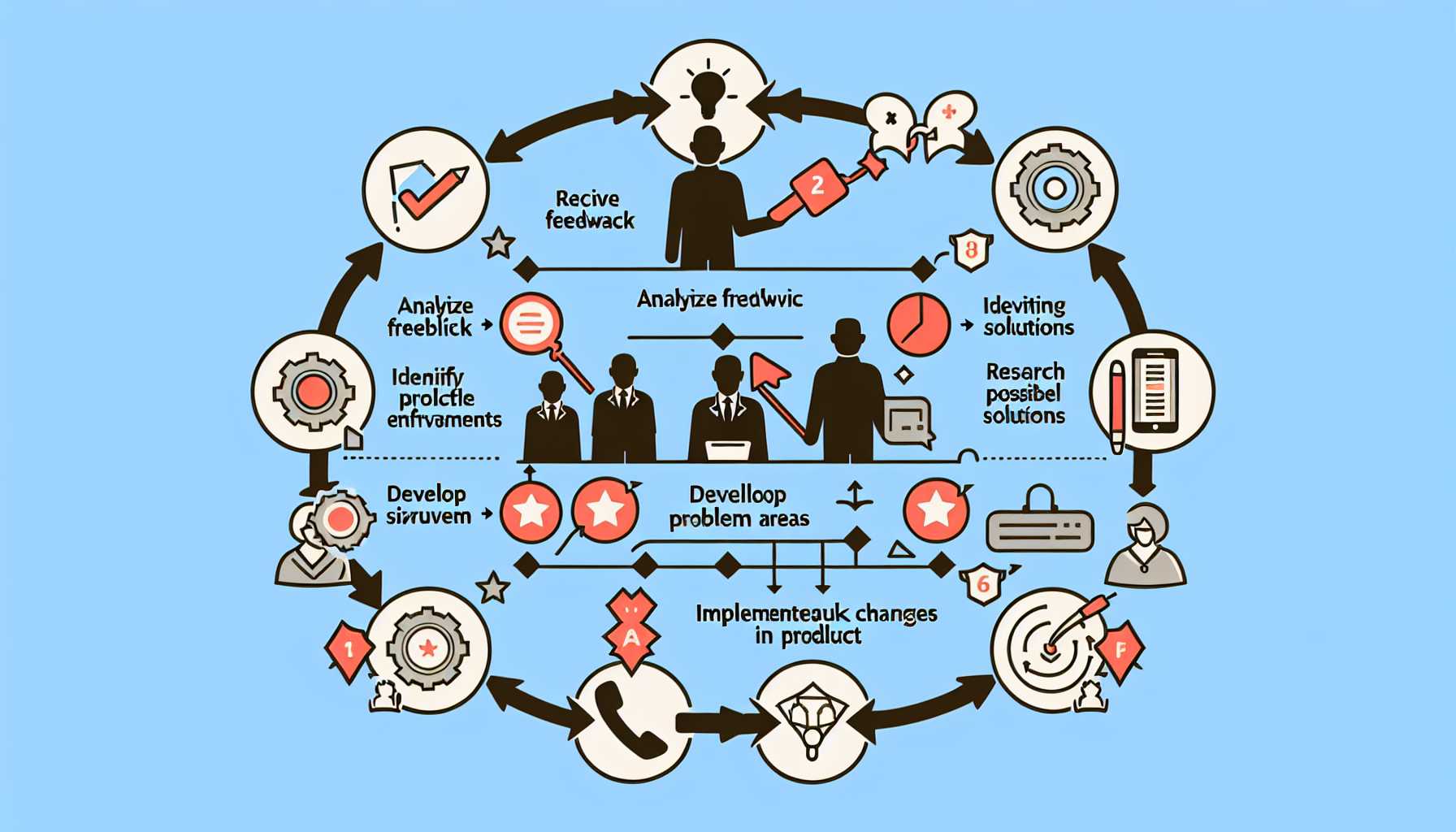Hello again, distinguished product managers. In this post, I delve into one of the toughest challenges we face: managing negative feedback. Drawing on my own experiences, we’ll explore strategies to turn criticism into valuable insights for our products.
Embracing Criticism as Opportunity
Negative feedback is inevitable, but it’s also an opportunity for growth. Over my career, I’ve learned to embrace it and use it constructively to enhance my products.
A Mindset Shift: From Defense to Discovery
The first step is shifting from a defensive mindset to one of discovery. Negative feedback is not personal; it’s a reflection of the user experience that offers a clear path to improvement.
Critical Steps in Responding to Negative Feedback
In my journey, I have identified some critical steps for effectively managing negative feedback:
1. Listening Actively and Acknowledging Concerns
Showing customers and stakeholders that their voice is heard is paramount. I make it a point to listen without interrupting and to acknowledge their concerns genuinely.
2. Gathering Detailed Insights
After acknowledging the feedback, it’s important to dig deeper. I ask follow-up questions to understand the root of the issue, which provides a clearer picture of the problem to be solved.
3. Keeping Communication Open and Transparent
Maintaining open lines of communication as we work through the issue reassures stakeholders that their feedback is being taken seriously and acted upon.
4. Incorporating Feedback into the Product Roadmap
All valid feedback should be considered for inclusion in the product roadmap. I’ve often found that what seems like a minor critique can lead to a substantial improvement.
5. Closing the Loop
Once the feedback has been addressed, I reach out to the original critics to show the changes made and to thank them for their contribution.
Personal Anecdotes of Negative Feedback Transformation
Let me share some instances where criticism led to breakthroughs in my products:
Case Study 1: The Misunderstood Feature
In one of my past products, a feature received significant criticism for being too complex. Upon revisiting the design and conducting user testing, we simplified the feature’s interface, which resulted in increased engagement and satisfaction.
Case Study 2: The Performance Issue Highlight
In another situation, users complained about the slow performance of an analytics feature. This criticism pushed us to optimize our backend processes, ultimately improving the performance of our entire platform.
Leveraging Frameworks to Inform Development
Beyond immediate problem-solving, several frameworks can help inform product development from feedback:
The Kano Model
The Kano Model has been instrumental in helping me classify feedback into categories (Must-be, Performance, and Delighters) and prioritize development efforts accordingly.
The Feedback Loop System
Implementing a structured feedback loop system, where feedback is collected, analyzed, prioritized, and then implemented, ensures that all feedback is given due consideration.
Best Practices for Managing Negative Feedback
Based on my experiences, here are some best practices:
- Always approach feedback with a positive, open mindset.
- Actively listen and dig into the why behind the feedback.
- Maintain transparent communication throughout the process.
- View negative feedback as a free consultation rather than a setback.
- Implement a structured system for feedback management.
- Nurture a culture where feedback is welcomed and valued.
Concluding Insights
Turning negative feedback into productive change is one of the most valuable skills a product manager can develop. It’s a journey of continual learning and adaptation—a journey well worth taking.
Remember, the goal isn’t to avoid criticism but to handle it so effectively that it strengthens your product and your relationship with your users.
Stay resilient, and keep iterating!

